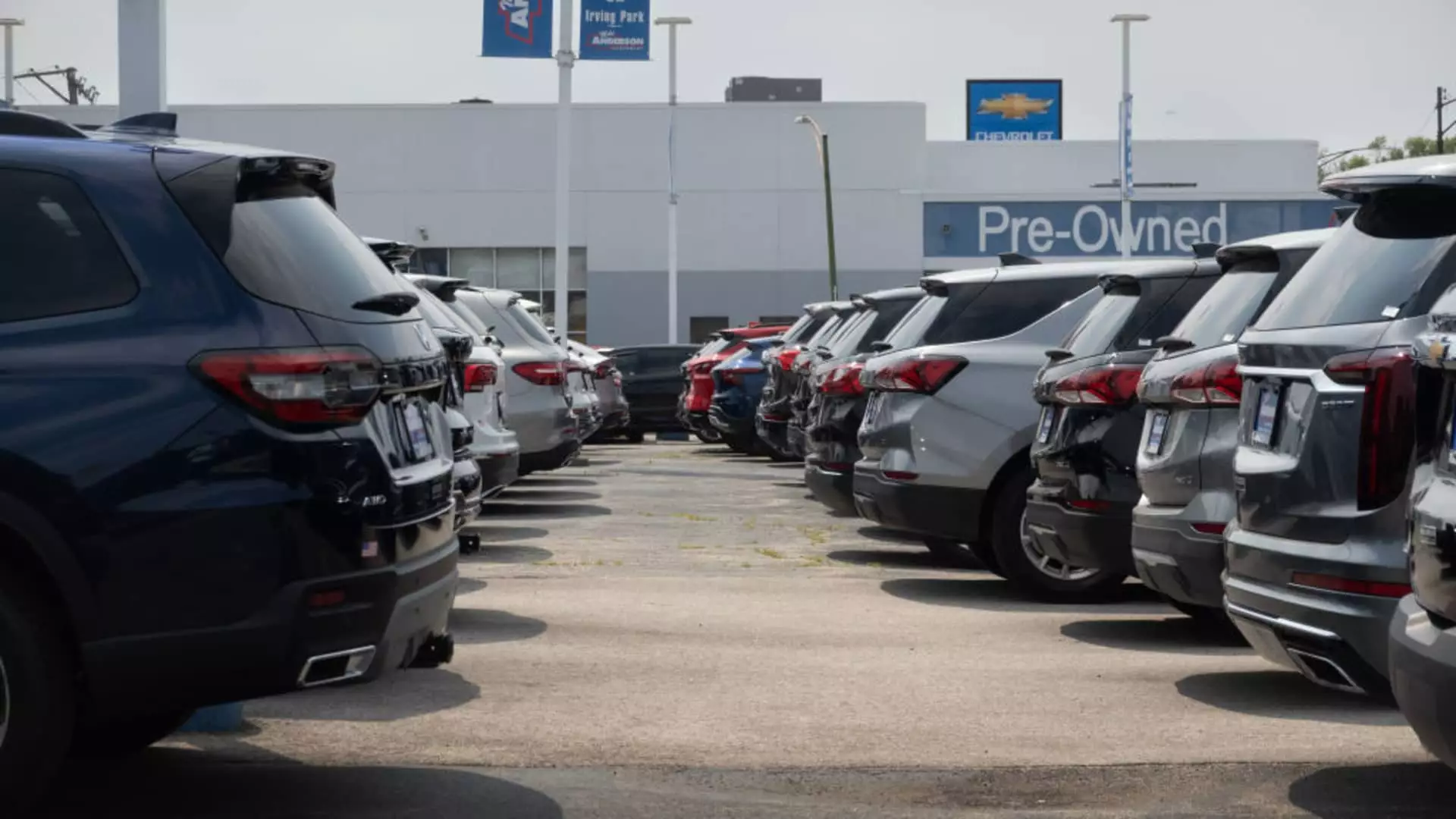In recent months, a troubling trend has emerged in the American auto finance landscape. According to a report by Edmunds.com, an increasing number of drivers are facing the dilemma of upside-down auto loans—where the amount owed on a vehicle exceeds its market value. As of the third quarter of this year, the average negative equity among these loans reached an unprecedented $6,458. This figure represents a sharp increase from the average of $6,255 observed in the previous quarter and $5,808 just a year earlier. This upward trend not only illustrates individual financial strains but also signals broader economic repercussions.
The rise in upside-down loans becomes increasingly concerning when viewed in the context of broader financial behaviors within the nation. The Federal Reserve’s recent findings reveal that delinquency rates for auto loans have surged above pre-pandemic levels—an indication that financial pressure on consumers is intensifying. Earlier, during the height of the COVID-19 pandemic, loan delinquency rates plummeted to historical lows, but as the economy seeks to stabilize, more consumers are finding it challenging to keep up with their financial obligations. This begs the question of whether upside-down loans are a symptom of a more significant economic malaise affecting the average American household.
Jessica Caldwell, an expert from Edmunds, has voiced her concerns regarding this phenomenon. While she acknowledges that owing a small amount more than a car’s worth isn’t catastrophic, the percentage of consumers facing far greater losses is indeed alarming. Reports indicate that over 20% of individuals with negative equity owe $10,000 or more, while 7.5% face a staggering deficit of over $15,000. Such statistics highlight not only individual financial struggles but also the potential ripple effects on car dealerships and the broader auto market, particularly if consumers opt to delay or forgo purchases altogether.
To navigate this troubling financial landscape, consumers can adopt several strategies. Keeping a vehicle for a longer duration can mitigate the risks associated with negative equity, along with a commitment to maintaining the vehicle regularly. Ensuring that a car stays in good condition can help preserve its value, ultimately minimizing losses when it’s time to sell. Edmunds’ insights director, Ivan Drury, emphasizes the importance of long-term thinking in vehicle ownership—particularly in an environment where both car prices and interest rates are notoriously high.
The current spike in negative equity can be attributed notably to consumer behaviors during 2021 and 2022. Lack of vehicle inventory during the pandemic led many buyers to pay inflated prices for new cars, unaware that the rapid depreciation would soon render their investments less viable. As the auto industry normalizes, it remains crucial for consumers to adopt realistic ownership practices and reassess their financial strategies when acquiring vehicles.
The surge in upside-down auto loans underscores a critical junction for American consumers grappling with financial pressures. As they navigate a labyrinth of high prices and rising interest rates, informed decision-making and strategic planning can be pivotal to avoiding a financial quagmire.

